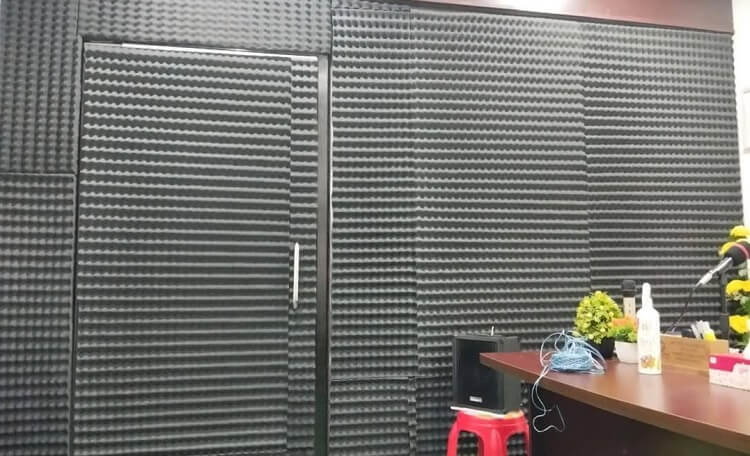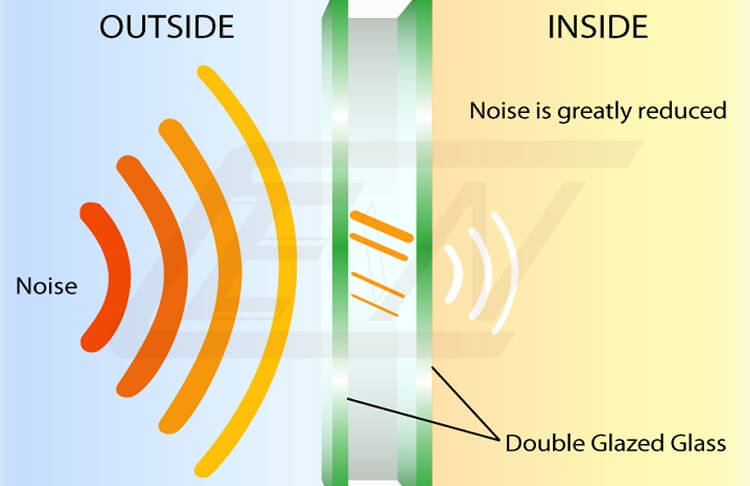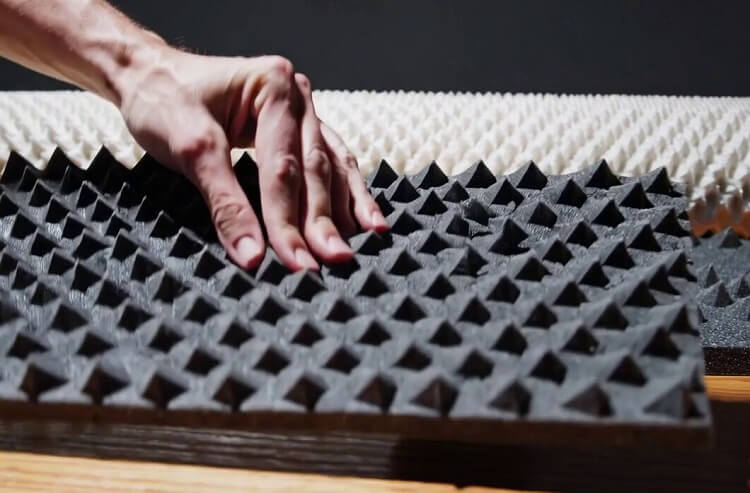
Living in a noisy world can be a constant source of stress, disrupting sleep, concentration, and overall well-being. Whether you’re battling the roar of city traffic, the clamor of noisy neighbors, or simply the echo within your own home, effective soundproofing can dramatically improve your quality of life. Understanding what materials block sound effectively is the key to creating a tranquil and comfortable living space.
This article provides a comprehensive guide to soundproofing materials, exploring the science behind sound transmission, the different types of noise you might encounter, and the most effective solutions for blocking unwanted sounds.
We’ll delve into the benefits and limitations of various materials, offer practical application tips, and help you navigate the decision-making process, empowering you to create a peaceful sanctuary.
The Science Behind Soundproofing
How Sound Travels
Sound is energy that travels in waves through various mediums, including air, liquids, and solids. These waves are created by vibrations and propagate by causing adjacent particles to vibrate as well. The density and elasticity of a material significantly impact how sound travels through it.
Denser materials resist the vibrations more effectively, while elastic materials tend to transmit vibrations with greater ease. Effective soundproofing relies on materials that either absorb sound energy, converting it into heat, or reflect the sound waves back towards their source.
Sound waves are characterized by their frequency (measured in Hertz, Hz) and wavelength. Frequency determines the pitch of a sound – higher frequencies correspond to higher-pitched sounds.
Wavelength is the distance between two consecutive peaks of a sound wave. Understanding frequency is crucial for effective soundproofing, as different materials perform differently at various frequencies.
Why Material Density Matters
The density of a material is a critical factor in its sound-blocking ability. The higher the density, the more effectively it impedes the transmission of sound waves.
For example, Mass Loaded Vinyl (MLV), a popular soundproofing material, is highly effective due to its high mass and flexibility, allowing it to block a wide range of frequencies. This dense material effectively resists the vibrations of sound waves, preventing them from passing through.
Types of Noise and Their Challenges
Airborne Noise
Airborne noise, such as voices, music, and traffic sounds, travels through the air and can easily penetrate through gaps, cracks, and thin materials. Effective soundproofing against airborne noise requires dense materials and airtight seals to prevent sound waves from entering a space.
Impact Noise
Impact noise results from vibrations transmitted through solid structures, such as footsteps on a floor, slamming doors, or objects dropped on the ceiling.
This type of noise is often more challenging to address than airborne noise. Soundproofing solutions for impact noise focus on damping vibrations and decoupling structural elements. Materials like resilient channels and specialized underlayments are commonly used to mitigate impact noise.
Top Soundproofing Materials and Their Effectiveness
Mass Loaded Vinyl (MLV)
- Overview: A dense, flexible material specifically engineered for sound blocking.
- Applications: Walls, floors, ceilings, and even inside vehicles.
- Benefits: Highly effective at blocking a broad range of frequencies, relatively easy to install, and available in various thicknesses and densities.
- STC Rating: 25-30 (depending on thickness and installation)
Acoustic Panels
- Overview: Designed to absorb sound reflections and reduce reverberation within a room.
- Applications: Home theaters, recording studios, offices, and any space where sound clarity is important.
- Benefits: Improves room acoustics and reduces echo, available in various designs and colors to match room décor.
- Limitations: Not as effective for blocking sound transmission through walls or floors.
- NRC Rating: 0.4 – 1.0 (depending on the material and construction)
Fiberglass Insulation
- Overview: A porous material that absorbs sound waves and provides thermal insulation.
- Applications: Walls, ceilings, attics, and floors.
- Benefits: Cost-effective, readily available, and offers both sound and thermal benefits.
Recycled fiberglass options are available for environmentally conscious projects.
- STC Rating: 30-45 (depending on density and installation)
Resilient Channels
- Overview: Metal channels installed on walls or ceilings to create an air gap and decouple drywall from the structure, reducing the transmission of impact noise.
- Applications: Walls and ceilings, particularly effective in new construction or major renovations.
- Benefits: Significantly reduces impact noise transmission.
- STC Rating: Can improve STC rating by 5-10 points when combined with other materials.
Soundproof Curtains and Blankets
- Overview: Heavy, dense fabrics designed to absorb sound and reduce noise transmission.
- Applications: Windows, doors, and as a temporary soundproofing solution.
- Benefits: Relatively inexpensive, easy to install, and can add a decorative touch to a room.
- STC Rating: 5-10 (depending on the thickness and material).
Acoustic Foam
- Overview: Open-cell foam panels designed to absorb sound reflections and improve sound clarity within a room.
- Applications: Recording studios, home theaters, vocal booths, and any space where controlling sound reflections is crucial.
- Limitations: Not designed to block sound transmission through walls or ceilings.
- NRC Rating: 0.7 – 1.0 (depending on the thickness and shape of the foam).
Factors to Consider When Choosing Soundproofing Materials
Budget
Soundproofing materials range in price from budget-friendly options like acoustic foam and soundproof curtains to more expensive solutions like MLV and specialized insulation.
Aesthetics
Consider the visual impact of the chosen materials. Acoustic panels, soundproof curtains, and even some types of insulation can be integrated into the room’s design.
Installation Difficulty
Some materials are easy to install with basic DIY skills, while others may require professional expertise.
Sustainability
Recycled and natural materials, such as recycled fiberglass insulation or natural fiber acoustic panels, offer sustainable soundproofing solutions.
DIY vs.
Professional Installation
DIY Projects
For smaller projects and simpler solutions, a DIY approach can be cost-effective. Installing acoustic panels, soundproof curtains, or even applying MLV to a wall can be manageable DIY tasks. However, it’s important to understand the limitations of DIY solutions and ensure proper installation for optimal effectiveness.
Professional Installation
For more complex projects involving resilient channels, double-layered drywall, or extensive soundproofing treatments, professional installation is often recommended.
Professionals have the expertise and specialized tools to ensure proper installation, maximizing the effectiveness of the soundproofing system.
Common Soundproofing Mistakes to Avoid
Using Ineffective Materials
Regular blankets or thin foam padding are not effective sound blockers. Choose specialized soundproofing materials designed for noise reduction.
Overlooking Small Gaps
Even small gaps and cracks can significantly compromise soundproofing efforts. Seal all gaps around windows, doors, vents, and electrical outlets with acoustic caulk or weatherstripping.
Ignoring Low-Frequency Noise
Low-frequency sounds, such as bass from music systems or traffic rumble, require specific materials and techniques for effective blocking, such as dense insulation or double-layered drywall combined with resilient channels.
FAQ
What is the most effective material for soundproofing walls?
Mass Loaded Vinyl (MLV) is often considered the most effective material for blocking sound transmission through walls due to its high density.
Combining MLV with other materials, like fiberglass insulation, can further enhance its effectiveness.
Can I soundproof a room on a budget?
Yes, budget-friendly options like soundproof curtains, acoustic foam panels, and DIY installation of MLV can offer noticeable improvements without breaking the bank.
Are eco-friendly soundproofing materials effective?
Yes, many eco-friendly soundproofing materials, such as recycled fiberglass insulation and natural fiber acoustic panels, provide excellent sound absorption and noise reduction while minimizing environmental impact.
How do I measure soundproofing effectiveness?
The Sound Transmission Class (STC) rating is a standard measure of a material’s ability to block airborne sound. Higher STC ratings indicate better soundproofing performance. The Noise Reduction Coefficient (NRC) measures a material’s ability to absorb sound within a room.
Understanding these ratings can help you select the right materials for your specific needs.
Conclusion
Creating a peaceful and quiet environment in your home or workspace is achievable with the right knowledge and materials. By understanding the principles of sound transmission and the properties of various soundproofing materials, you can effectively address your specific noise challenges. Whether you’re looking for a simple DIY solution or a comprehensive professional installation, there’s a soundproofing strategy to fit every need and budget.
Taking the time to research and select the right materials will pay off in the long run, resulting in a more tranquil and comfortable living or working space.






